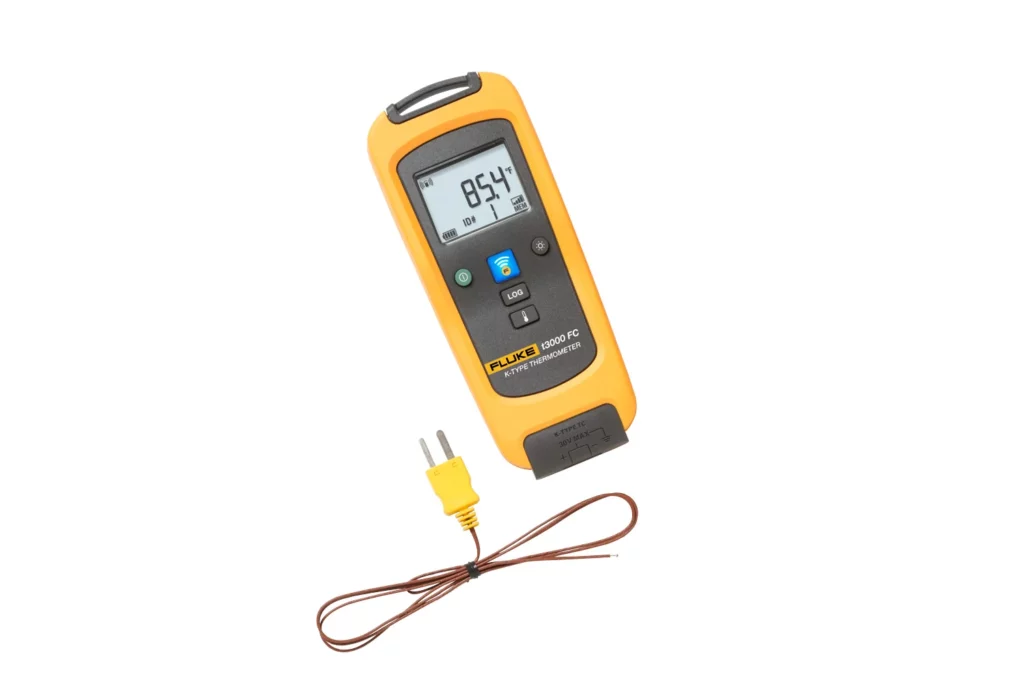In an era where technology is revolutionising various sectors, wireless temperature monitoring has emerged as a critical component across industries in Australia. From agriculture to pharmaceuticals, the ability to track temperature remotely ensures not only efficiency but also compliance with safety standards. This article delves into the essentials of wireless temperature monitoring, its benefits, applications, and key considerations for businesses in Australia.
The Importance of Temperature Monitoring
Temperature monitoring is essential for numerous industries, particularly those that handle perishable goods or sensitive materials. Maintaining the right temperature can prevent spoilage, ensure product quality, and comply with regulatory standards. In Australia, where climate conditions can vary significantly, effective temperature monitoring becomes even more crucial. The diverse Australian landscape, ranging from tropical regions in the north to temperate zones in the south, presents unique challenges for businesses striving to maintain optimal conditions for their products. As a result, the implementation of robust temperature monitoring systems is not just a best practice but a necessity for operational success.
Wireless temperature monitoring Australia is a vital component for businesses across various sectors in Australia. The ability to monitor temperatures in real-time not only enhances compliance and safety but also contributes to overall operational efficiency. As technology continues to evolve, embracing wireless monitoring systems will be crucial for businesses aiming to remain competitive in an increasingly demanding market.
Impact on Food Safety
In the food industry, temperature control is vital to prevent foodborne illnesses. The Australian food safety regulations stipulate strict temperature guidelines for food storage and transportation. Wireless temperature monitoring systems allow businesses to track temperatures in real-time, ensuring compliance and enhancing consumer safety. Moreover, these systems can provide invaluable data analytics, enabling food businesses to identify trends and make informed decisions regarding inventory management and supply chain logistics. This proactive approach not only safeguards public health but also bolsters consumer confidence in the food supply chain, which is increasingly important in today’s health-conscious society.
Pharmaceutical Applications
For the pharmaceutical sector, maintaining the integrity of temperature-sensitive medications is paramount. Vaccines, for instance, require strict temperature controls during storage and distribution. Wireless monitoring systems provide an efficient solution, alerting stakeholders to any deviations that could compromise the efficacy of these critical products. Additionally, the implementation of such systems can streamline compliance with stringent regulatory requirements, allowing pharmaceutical companies to focus on innovation and patient care. The ability to generate detailed reports and maintain a comprehensive temperature history also plays a crucial role in audits and inspections, further underscoring the importance of reliable temperature monitoring in safeguarding public health.
Benefits of Wireless Temperature Monitoring
Implementing wireless temperature monitoring systems offers numerous advantages that can significantly enhance operational efficiency and safety. These benefits extend across various sectors, making them an invaluable investment.
Real-Time Data Access
One of the most significant advantages of wireless temperature monitoring is the ability to access real-time data. Businesses can monitor temperature fluctuations instantly, allowing for immediate action if temperatures deviate from the acceptable range. This capability not only prevents potential losses but also fosters a proactive approach to temperature management. For instance, in the food and beverage industry, maintaining the correct temperature is crucial to ensuring product quality and safety. With wireless systems, operators can receive alerts directly to their mobile devices, enabling them to respond swiftly and mitigate risks before they escalate into more serious issues.

Cost Efficiency
While the initial investment in wireless monitoring technology may seem substantial, the long-term savings can be considerable. By preventing spoilage and ensuring compliance, businesses can avoid costly fines and losses. Additionally, wireless systems reduce the need for manual checks, freeing up staff to focus on other critical tasks. This efficiency not only optimises labour costs but also enhances productivity, as employees can redirect their efforts towards improving service delivery or expanding operations. Moreover, the reduction in energy consumption associated with better temperature management can lead to significant savings on utility bills, further contributing to the overall cost-effectiveness of these systems. Read more about productivity at https://pmc.ncbi.nlm.nih.gov/articles/PMC9898133/
Enhanced Compliance and Reporting
In Australia, various industries are subject to stringent regulations regarding temperature control. Wireless monitoring systems simplify compliance by automatically logging temperature data, making it easier to generate reports for regulatory bodies. This not only saves time but also reduces the risk of human error in record-keeping. Furthermore, the ability to access historical data allows businesses to identify trends and make informed decisions to improve their processes. In sectors such as pharmaceuticals, where product integrity is paramount, having accurate and readily available records can be the difference between compliance and costly penalties. The integration of these systems with existing management software can also streamline operations, ensuring that all aspects of temperature control are harmonised and efficiently managed.
Key Features to Consider
When selecting a wireless temperature monitoring system, several features should be considered to ensure it meets the specific needs of the business. Understanding these features can help in making an informed decision.
Sensor Accuracy and Range
The accuracy of temperature sensors is paramount. A system that provides precise readings will help maintain product integrity. Additionally, the range of the sensors should be suitable for the environment in which they will be used. For larger facilities, consider systems with extended range capabilities to cover all areas effectively.
Alerts and Notifications
Effective alert systems are crucial for timely responses to temperature deviations. Look for systems that offer multiple notification methods, such as SMS, email, or app notifications. This ensures that relevant personnel are alerted immediately, allowing for swift corrective actions.
Data Storage and Access
Cloud-based storage solutions offer significant advantages in terms of data accessibility and security. Ensure that the chosen system provides easy access to historical data, which can be invaluable for audits and compliance checks. Additionally, consider how user-friendly the interface is for staff members who will be using the system.
Applications Across Industries
Wireless temperature monitoring systems are versatile and can be applied in various industries. Understanding how different sectors utilise this technology can provide insights into its potential benefits.

Agriculture and Horticulture
In the agricultural sector, temperature monitoring plays a crucial role in crop management. Farmers can monitor conditions in greenhouses or storage facilities, ensuring optimal environments for growth and preservation. This technology helps in maximising yields and reducing waste, ultimately supporting sustainability efforts. Click here to find more about yields.
Healthcare Facilities
Healthcare facilities rely heavily on temperature control to maintain the efficacy of medications and vaccines. Wireless monitoring systems ensure that these critical items are stored within the required temperature ranges, safeguarding patient health. Hospitals and clinics benefit from real-time monitoring, reducing the risk of temperature-related incidents.
Transport and Logistics
In the transport and logistics sector, maintaining the right temperature during transit is essential, particularly for perishable goods. Wireless temperature monitoring allows logistics companies to track conditions in real-time, ensuring that products arrive in optimal condition. This capability enhances customer satisfaction and reinforces brand reliability.
Challenges and Considerations
Despite the numerous benefits, businesses must also consider potential challenges when implementing wireless temperature monitoring systems. Understanding these challenges can help in devising effective strategies for successful integration.
Initial Costs and Investment
While the long-term savings are evident, the initial investment in wireless temperature monitoring technology can be a barrier for some businesses. It is essential to conduct a cost-benefit analysis to determine the potential return on investment. Exploring financing options or phased implementations can also ease the financial burden.
Integration with Existing Systems
Integrating new technology with existing systems can be complex. Businesses should evaluate how the wireless monitoring system will fit into their current operations. Working with experienced vendors who offer support during the integration process can help mitigate potential issues.
Future Trends in Wireless Temperature Monitoring
The landscape of wireless temperature monitoring is continually evolving, driven by advancements in technology and changing industry needs. Staying abreast of these trends can help businesses remain competitive and efficient.
IoT and Smart Technology
The Internet of Things (IoT) is transforming the way temperature monitoring systems operate. Smart sensors equipped with IoT capabilities can communicate with other devices, providing a more comprehensive view of operational conditions. This interconnectedness enhances data analysis and decision-making processes.
Artificial Intelligence and Predictive Analytics
As artificial intelligence (AI) technology advances, predictive analytics is becoming a valuable tool in temperature monitoring. By analysing historical data, AI can predict potential temperature fluctuations, allowing businesses to take preemptive measures. This proactive approach can significantly reduce risks and enhance operational efficiency.
Conclusion
Investing in a reliable wireless temperature monitoring system is not merely a choice; it is a necessity for businesses committed to quality and safety. By understanding the benefits, features, and applications of these systems, organisations can make informed decisions that will ultimately lead to enhanced performance and customer satisfaction.
